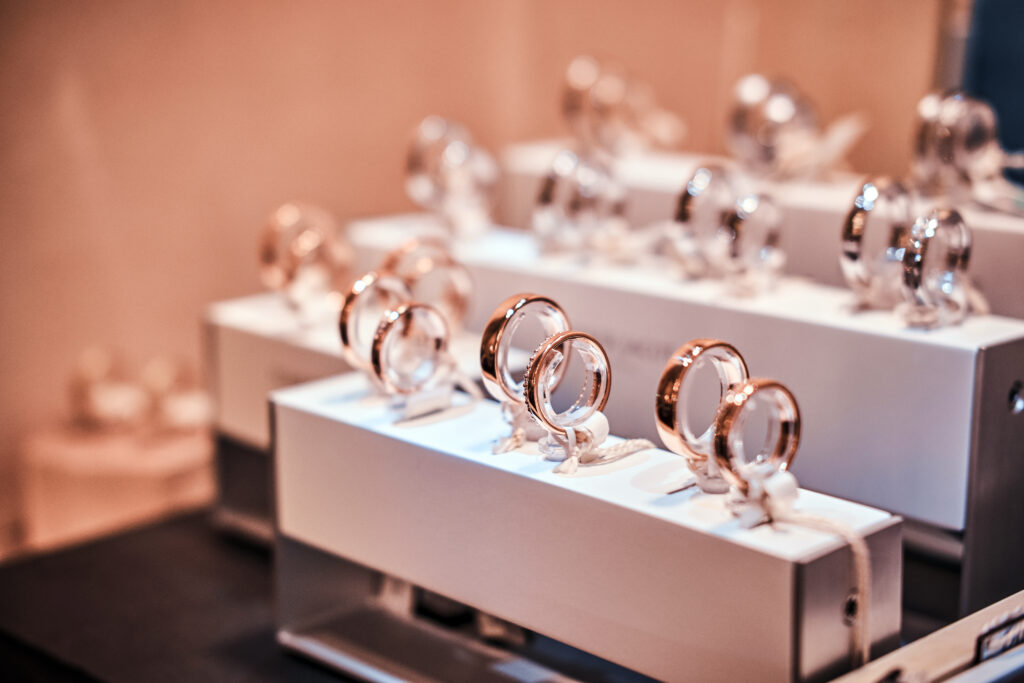Business Planning & Strategy, Financial Models
Jewelry Store Business: Costs, Revenue Potential & Profitability
Jewelry stores operate in a premium, discretionary retail segment characterized by high unit margins but low inventory liquidity. Success is not driven by sales volume, but by product mix optimization, conversion effectiveness, and inventory turnover discipline. Because fixed costs are significant and foot traffic can be volatile, profitable operations are built on trust, ticket size maximization, and controlled merchandising, not breadth of selection.
Asset Configuration
CapEx is moderate to high, depending on store location and security infrastructure. A typical store includes 300–800 sq. ft. of controlled showroom space with display cases, surveillance, secure storage, and premium finishes to project value and trust.
| Asset Category | Cost Range (USD) | Notes |
|---|---|---|
| Display Cases & Lighting | $25,000 – $50,000 | Glass showcases, LED spotlights, locking units |
| Security Infrastructure | $15,000 – $30,000 | Alarms, reinforced safes, cameras, insurance-rated features |
| Store Buildout & Furnishings | $30,000 – $60,000 | Branding, furniture, flooring, ambiance |
| POS & CRM System | $5,000 – $10,000 | Invoicing, inventory tracking, client follow-ups |
| Initial Inventory (resale-ready) | $150,000 – $500,000 | Mix of gold, silver, diamonds, branded and private-label pieces |
Total CapEx: $225,000 – $650,000, driven primarily by initial inventory and security. Leasing space in high-traffic malls or luxury zones can add significant upfront costs.
Revenue Model
Revenue is transactional, with average ticket sizes ranging from $500–$3,000+, depending on product mix and positioning. Margins on gold and silver pieces range 30–50%, while branded or custom designs can exceed 70%. Upsells include customization, resizing, engraving, extended warranties, and cleaning plans. Repair and appraisal services provide additional steady cash flow.
Annual Revenue Potential for a Boutique Jewelry Store, Urban Middle-High Market
| Revenue Stream | Volume Assumption | Annual Revenue (USD) |
|---|---|---|
| Jewelry Sales | 2,000 transactions @ $1,100 avg. | $2,200,000 |
| Repairs & Services | 1,000 jobs @ $100 avg. | $100,000 |
| Custom Orders | 150 clients @ $2,500 avg. | $375,000 |
| Add-ons (insurance, cleaning plans) | $500/week avg. | $26,000 |
| Total | $2,701,000 |
High-end stores with larger inventory depth and branded partnerships can exceed $4M–$6M/year. Low-volume, under-marketed shops may struggle to exceed $500K–$1M/year, especially without digital sales support.
Operating Costs
COGS is the largest cost driver, especially for inventory held in precious metals. Labor is typically lean but skilled—often owner-led or supported by commissioned sales staff. Rent, insurance, and security systems are also major fixed costs.
| Cost Category | Annual Cost (USD) |
|---|---|
| Cost of Goods Sold | $1,080,000 – $1,350,000 |
| Staff Wages & Commissions | $325,000 – $400,000 |
| Rent & Utilities | $210,000 – $270,000 |
| Security, Insurance, Loss Prevention | $110,000 – $160,000 |
| Marketing & Brand Building | $110,000 – $160,000 |
| CRM, POS, and Admin Systems | $50,000 – $75,000 |
| Total | $1.89M – $2.42M |
Efficient operators with strong pricing discipline, inventory rotation, and high-ticket product focus can maintain 25–30% EBITDA margins. Those with stagnant SKUs, discounting dependence, or poor shrinkage control fall below 15%.
Profitability Strategies
In jewelry retail, profitability is earned through curation, not scale. The core lever is not traffic volume, but margin per square foot and inventory velocity.
First, optimize the product mix by tiering inventory into core, seasonal, and showcase categories. Core items (e.g., engagement rings, daily wear) drive consistent sales. Seasonal collections support newness and upsell, while showcase pieces elevate brand positioning and attract high-ticket buyers – even if sold rarely.
Second, focus on conversion and clienteling. Jewelry is trust-driven and often emotionally motivated. Staff must be trained in guided sales, needs discovery, and upselling warranties, sizing, or personalization. CRM systems should be used to build long-term relationships, with automated reminders for anniversaries, birthdays, and follow-ups on recent purchases.
Third, liquidity of inventory must be rigorously managed. High-margin items with low turnover consume capital. Implement aging-based markdown protocols and lean on made-to-order models for slow movers. Aim for 2–2.5x annual inventory turnover to reduce holding risk.
Lastly, defend pricing discipline. Avoid price-based competition by reinforcing exclusivity, craftsmanship, and service. Offer value-adds instead of discounts – free resizing, lifetime cleaning, or limited edition packaging. This sustains premium positioning and long-term margin integrity.
So what?
A jewelry store is not a volume business – it’s a high-trust, margin-engineered retail model. Profitability depends on ticket size, inventory velocity, and experience-led conversion. Operators who curate tightly, sell relationally, and rotate efficiently can achieve 25–30% EBITDA margins on $225K–$650K CapEx.

Are you considering opening your Jewelry Store business? Download the comprehensive Jewelry Store Business Financial Model Template from SHEETS.MARKET to simplify your financial planning. This tool will help you forecast costs, revenue, and potential profits, making securing funding and planning for success for your Jewelry Store business easier.



